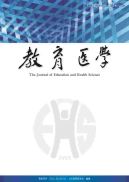Volume 58, Issue 4
Displaying 1-7 of 7 articles from this issue
- |<
- <
- 1
- >
- >|
-
2013 Volume 58 Issue 4 Pages 321-331
Published: 2013
Released on J-STAGE: October 07, 2021
Download PDF (2353K) -
2013 Volume 58 Issue 4 Pages 332-343
Published: 2013
Released on J-STAGE: October 07, 2021
Download PDF (1664K) -
2013 Volume 58 Issue 4 Pages 344-350
Published: 2013
Released on J-STAGE: October 07, 2021
Download PDF (735K) -
2013 Volume 58 Issue 4 Pages 351-357
Published: 2013
Released on J-STAGE: October 07, 2021
Download PDF (739K) -
2013 Volume 58 Issue 4 Pages 358-364
Published: 2013
Released on J-STAGE: October 07, 2021
Download PDF (1358K) -
2013 Volume 58 Issue 4 Pages 365-371
Published: 2013
Released on J-STAGE: October 07, 2021
Download PDF (1441K) -
2013 Volume 58 Issue 4 Pages 372-381
Published: 2013
Released on J-STAGE: October 07, 2021
Download PDF (1365K)
- |<
- <
- 1
- >
- >|
